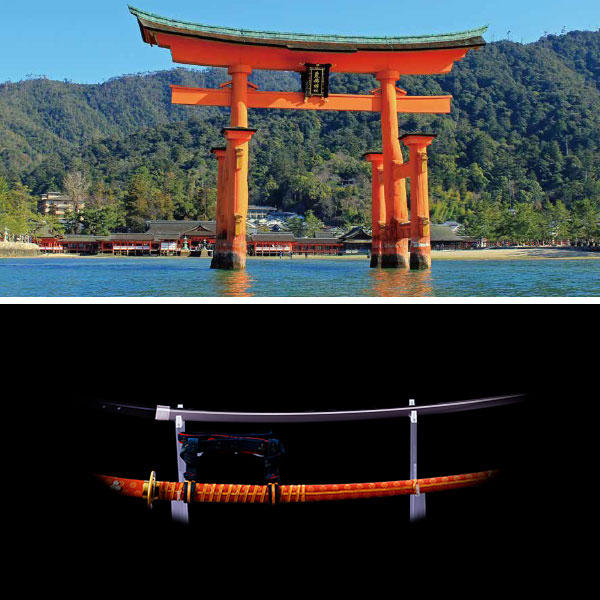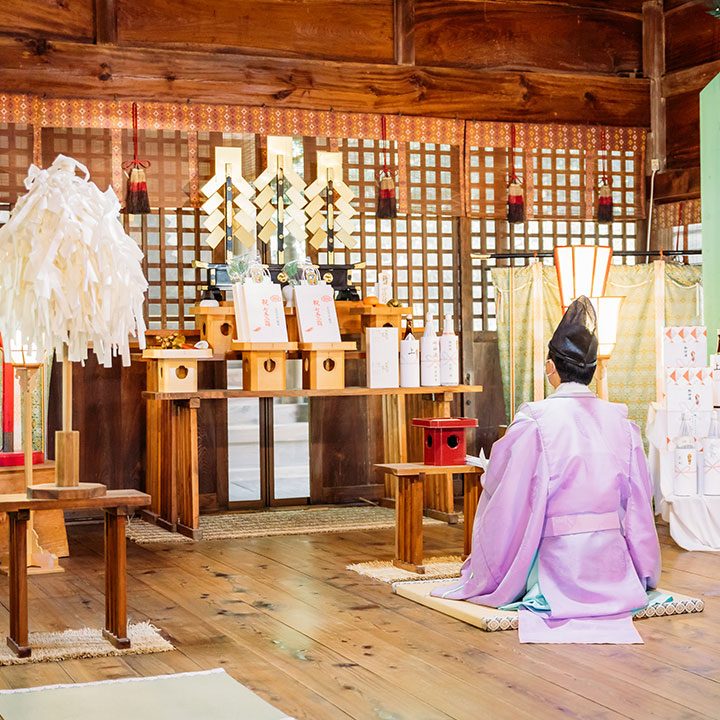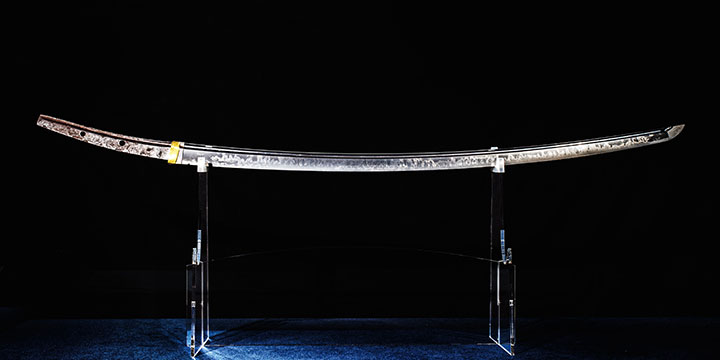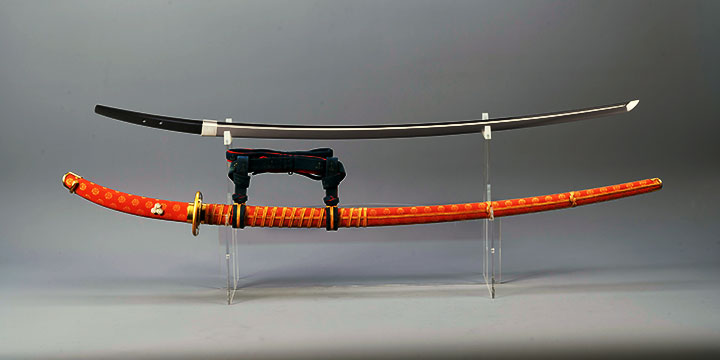

VOTIVE SWORDS AND
CULTURAL HERITAGE
OFFERINGS OF GRATITUDE TO THE GODS

Japanese culture includes the dedication of offerings to shrines and temples to express gratitude and respect for the Shinto gods and Buddha. Festivals have been held since ancient times to pray for and celebrate a bountiful harvest. In return, offerings of freshly harvested rice and freshly made sake are made. In addition to tangible offerings, music and dance is also performed as an offering.
To the Japanese, the dedication of something of value is a symbol of gratitude to the Shinto gods and Buddha. It also serves as a prayer for good fortune in the future.
TREASURE SWORDS WORTHY OF DEDICATION TO THE GODS OF JAPAN

Swords were introduced to Japan via mainland Asia around the Yayoi period (300 BC-300 AD), Swords were treated as treasures rather than weapons. The sword named, Kusanagi-no-Tsurugi is included in the Three Sacred Treasures of the imperial regalia. These are items handed down through successive emperors as divine proof of their imperial right to rule. The Kusanagi-no-Tsurugi appears in the origin myths of Japan in a tale set in Izumo province.
Japanese swords are not merely be weapons. They are been considered to be somewhat mysterious sacred treasures with spiritual power, worthy of being dedicated to the gods and Buddha. Sometimes they are even worshiped as the embodiment of the gods themselves.
THE MOST BEAUTIFUL SWORDS FOR DEDICATION TO THE GODS

Among the many swords dedicated to Shrine and Temples, a large number have long blades and koshirae (mountings) for ceremonial purposes. The Shida Odachi, is particularly large votive sword with a cutting-edge length of 220.4 cm. Its total length is 322,2 cm. It has been designated an Important Cultural Property and is housed in Yahiko Shrine (Niigata Prefecture). Another famous votive Important Cultural Property is the, Nenekiri-maru that was dedicated to Nikko-Futarasan Shrine (Tochigi Prefecture). It has a blade length of 216.6 cm and a total length of 324.1 cm.
Since votive swords are not necessarily to be used in actual combat, in some cases the weight and ease of use are irrelevant. The emphasis is placed on beauty, in the swordsmiths vision of a sword of substantial size, sometimes also accompanied by a beautiful and luxurious koshirae, worthy of dedication to the gods.







